Related Research Articles

Comte Henri Marie Raymond de Toulouse-Lautrec-Monfa, known as Toulouse-Lautrec, was a French painter, printmaker, draughtsman, caricaturist, and illustrator whose immersion in the colourful and theatrical life of Paris in the late 19th century allowed him to produce a collection of enticing, elegant, and provocative images of the sometimes decadent affairs of those times.
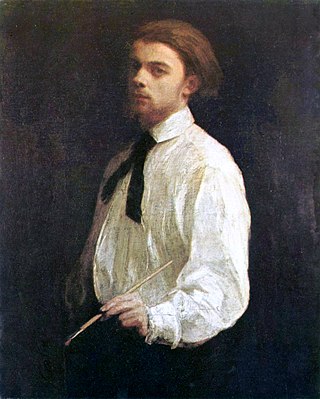
Henri Fantin-Latour was a French painter and lithographer best known for his flower paintings and group portraits of Parisian artists and writers.

Honoré-Victorin Daumier was a French painter, sculptor, and printmaker, whose many works offer commentary on the social and political life in France, from the Revolution of 1830 to the fall of the second Napoleonic Empire in 1870. He earned a living producing caricatures and cartoons in newspapers and periodicals such as La Caricature and Le Charivari, for which he became well known in his lifetime and is still remembered today. He was a republican democrat, who satirized and lampooned the monarchy, politicians, the judiciary, lawyers, the bourgeoisie, as well as his countrymen and human nature in general.

Gilbert Stuart was an American painter born in the Rhode Island Colony who is widely considered one of America's foremost portraitists. His best-known work is an unfinished portrait of George Washington, begun in 1796, which is usually referred to as the Athenaeum Portrait. Stuart retained the original and used it to paint scores of copies that were commissioned by patrons in America and abroad. The image of George Washington featured in the painting has appeared on the United States one-dollar bill for more than a century and on various postage stamps of the 19th century and early 20th century.

William Morris Hunt was an American painter.

Fitz Henry Lane was an American painter and printmaker of a style that would later be called Luminism, for its use of pervasive light.

Ellsworth Kelly was an American painter, sculptor, and printmaker associated with hard-edge painting, Color field painting and minimalism. His works demonstrate unassuming techniques emphasizing line, color and form, similar to the work of John McLaughlin and Kenneth Noland. Kelly often employed bright colors. He lived and worked in Spencertown, New York.
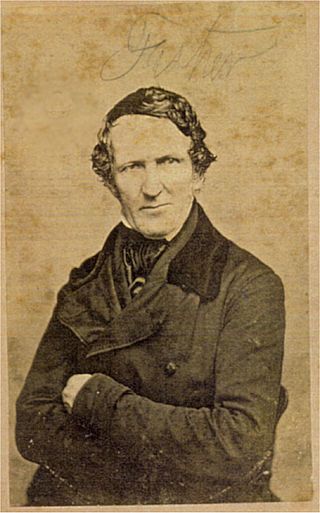
Alvan Fisher was an American landscape and genre painter.
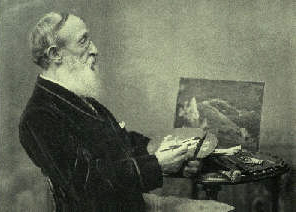
Benjamin Champney was a painter known for his role in White Mountain art of the 19th century. He began his training as a lithographer under celebrated marine artist Fitz Henry Lane at Pendleton's Lithography shop in Boston. Most art historians consider him the founder of the "North Conway Colony" of painters who came to North Conway, New Hampshire, and the surrounding area during the second half of the 19th century. His paintings were often used to make chromolithographs that were subsequently sold to tourists who could not afford Champney's originals. He exhibited regularly at the Boston Athenæum and was a founder of the Boston Art Club.

White Mountain art is the body of work created during the 19th century by over four hundred artists who painted landscape scenes of the White Mountains of New Hampshire in order to promote the region and, consequently, sell their works of art.

Eugène Anatole Carrière was a French Symbolist artist of the fin-de-siècle period. Carrière's paintings are best known for their near-monochrome brown palette and their ethereal, dreamlike quality. He was a close friend of Auguste Rodin and his work likely influenced Pablo Picasso's Blue Period. He was also associated with such writers as Paul Verlaine, Stéphane Mallarmé and Charles Morice.
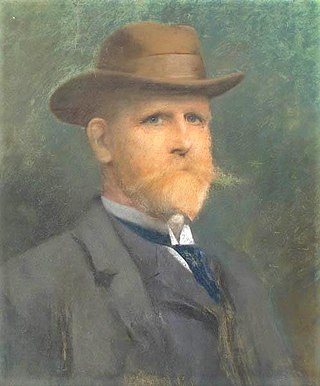
James Wells Champney was an American genre artist and illustrator noted for his portraits, oriental scenes and American landscapes.

Robert Salmon was a maritime artist, active in both England and America. Salmon completed nearly 1,000 paintings, all save one of maritime scenes or seascapes. He is widely considered the Father of American Luminism.
James William Govett was an Australian impressionist who worked mostly in watercolor and oil, focusing on landscapes and portraits.

John Henry Bufford (1810-1870) was a lithographer in 19th-century Boston, Massachusetts.

Pendleton's Lithography (1825–1836) was a lithographic print studio in 19th-century Boston, Massachusetts, established by brothers William S. Pendleton (1795-1879) and John B. Pendleton (1798-1866). Though relatively short-lived, in its time the firm was prolific, printing portraits, landscape views, sheet music covers, and numerous other illustrations. The Pendleton's work might be characterized by its generosity—each print contains a maxima of visual information designed for graphic reproduction.
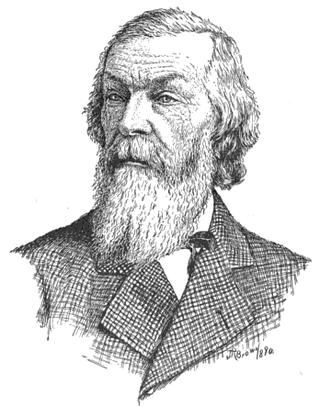
Benjamin Franklin Nutting was an artist in Boston, Massachusetts, in the 19th century. He taught drawing in local schools, published do-it-yourself drawing instruction materials, and showed his artwork in several exhibitions.
Thomas Badger (1792–1868) was an artist in Boston, Massachusetts, in the 19th century. He specialized in portraits. He trained with John Ritto Penniman. Portrait subjects included: John Abbot; William Allen, of Bowdoin College; Asa Clapp; Julia Margaretta Dearborn; George B. Doane; Henry Wadsworth Longfellow; Benjamin Page; Thomas Paul, of Boston's African Meeting House; Jotham Sewall; Benjamin Vaughan; Charles Vaughan; Frances Western Apthorp Vaughan; George Wadsworth Wells; Jonathan Winship. Around 1849 a still life by Badger in the collection of the Boston Museum was considered "a highly finished and excellent picture, something in the style of Van Huysom. There is a truth and reality in the articles represented, seldom seen in this class of pictures."

John White Allen Scott was an American painter and lithographer associated with the Hudson River School and White Mountain art.

Eugène Lepoittevin, also known as Poidevin, Poitevin, and Le Poittevin, was a French artist who achieved an early and lifelong success as a landscape and maritime painter. His work ranged from erotic caricatures to massive battle scenes. His works are in the collections of many museums throughout France. He made many paintings set in and around the fishing village of Étretat, and in 2020 he was the subject of an exhibition and book, L'invention d'Étretat: Eugène Le Poittevin, un peintre et ses amis à l'aube de l'impressionnisme.
References
- 1 2 3 4 5 6 Pierce, Sally; Slautterback, Catharina (1991). Boston Lithography, 1825-1880: The Boston Athenæum Collection. Boston, MA: Boston Athenæum. p. 168-169. ISBN 0934552576.
- 1 2 3 4 5 6 7 8 9 10 11 12 13 14 15 16 17 18 19 20 21 22 23 24 25 26 Champney, Benjamin (1900). Sixty Years' Memories of Art and Artists. Woburn, MA: Wallace & Andrews.
- ↑ Hewes, Samuel H. (October 9, 1843). "Died". Boston Courier (Volume: 16, Issue: 2029). Boston, MA.
- ↑ Cooke, Robert (1840). Hall's Quick Step (lithograph; 33.65 x 25.4 cm (13 1/4 x 10 in.)). Boston, MA: Museum of Fine Arts, Boston. Retrieved August 15, 2024.
- ↑ Cooke, Robert (c. 1840). Hosea Ballou II (lithograph on paper; 60.5 x 48.1cm (23 13/16 x 18 15/16")). Washington, D.C.: National Portrait Gallery (United States). Retrieved August 15, 2024.
- ↑ Cooke, Robert (1840). Hall's Quick Step (lithograph; 33.02 × 24.77 cm (13 × 9 3/4 in.)). Washington, DC: National Gallery of Art. Retrieved August 17, 2024.
- ↑ Cooke, Robert (1837–1841). (various) (lithograph). Boston, MA: Boston Athenæum. Retrieved August 17, 2024.
{{cite book}}: CS1 maint: date format (link) - ↑ Cooke, Robert. (various) (lithograph). Worcester, MA: American Antiquarian Society. Retrieved August 18, 2024.
- ↑ Cooke, Robert (c. 1840). The Judgement of Solomon (painting). Boston, MA (formerly): Boston Museum and Gallery of Fine Arts. Retrieved August 15, 2024.
- ↑ Champney, Benjamin (1900). Sixty Years' Memories of Art and Artists. Woburn, MA: Wallace & Andrews. p. 37.